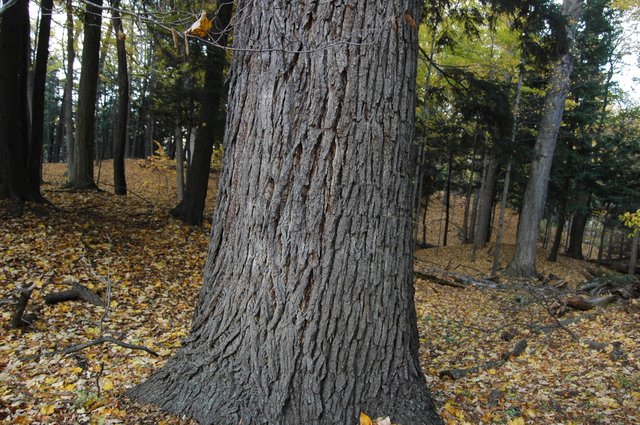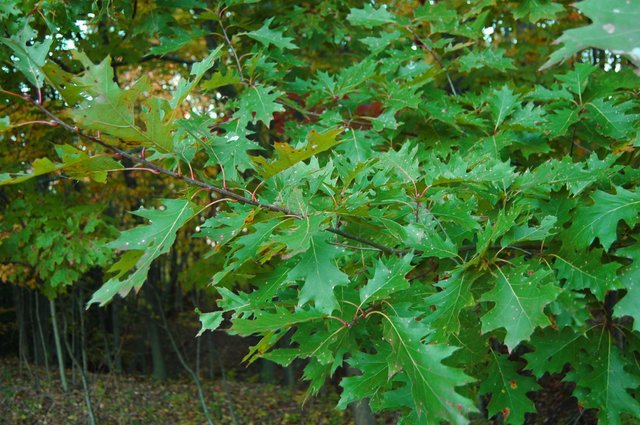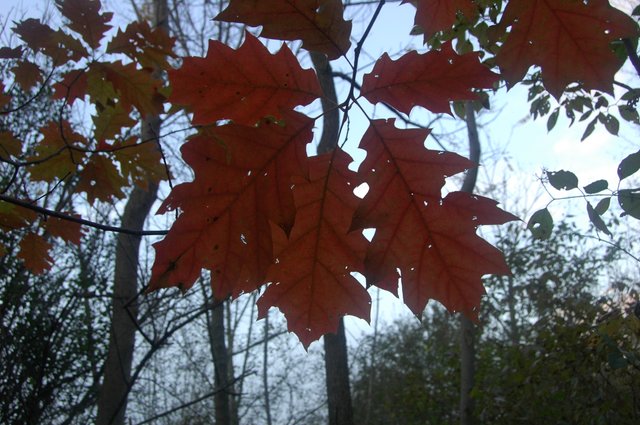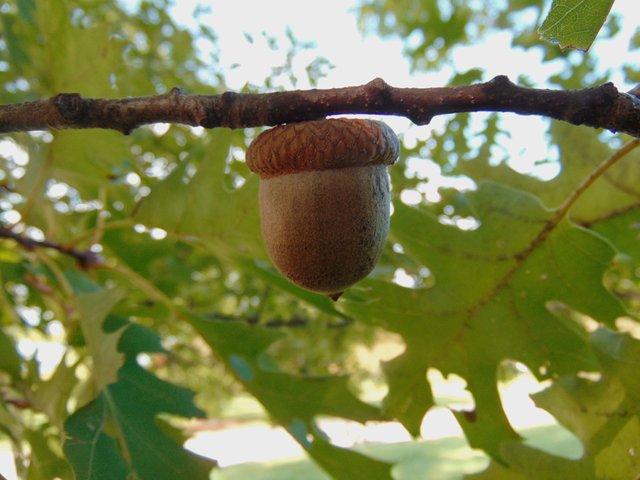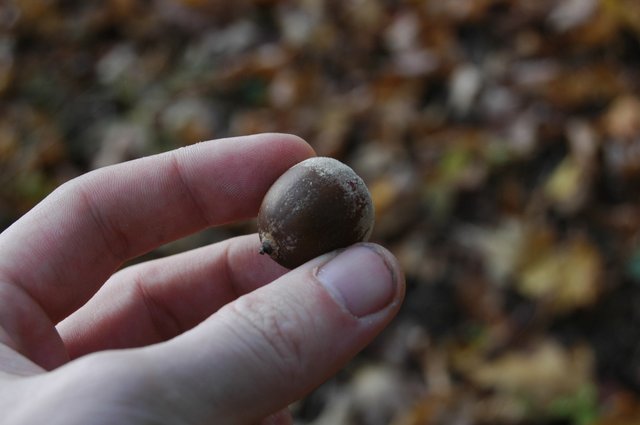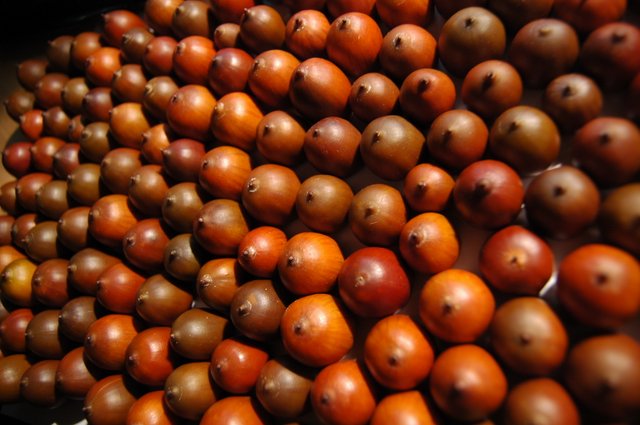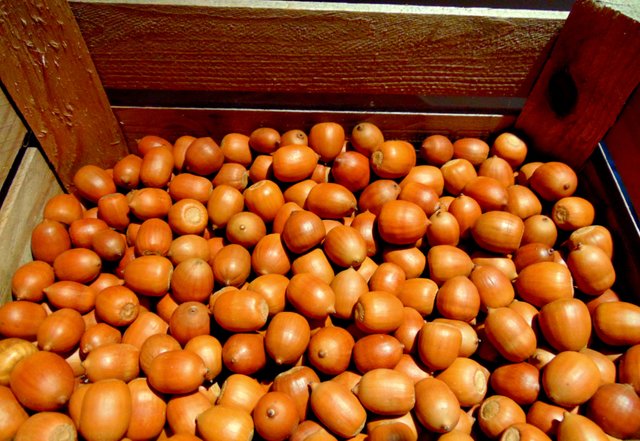Trees of Canada - Northern red oak
Oaks are common in our forests, and the red oak is king.
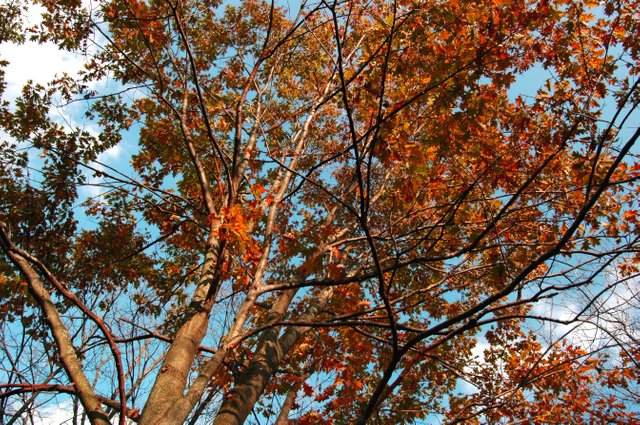
There are many species of oak in the world but few are native to Canada. Northern red oak (Quercus rubra) is found throughout eastern Canada and the United States. It can be found anywhere from Lake Superior to Nova Scotia, giving it the broadest range of any oak in Canada. Unsurprisingly, it is a hardy tree that can tolerate a variety of conditions. It often grows intermixed with other hardwoods and pines. Like most oaks it prefers a dry upland habitat and is moderately shade tolerant.
As one of the main hardwood species in our forests alongside maple, beech and walnut, the wood of red oak is used for timber, pulpwood, general lumber and makes excellent long-burning firewood. This species can grow quite large if given the opportunity, average trees are 25m high and 30 to 90cm in diameter, sometimes over 30m high and more than 1m in diameter in old specimens. The bark is smooth and dark gray when young and develops grooves with long flat gray ridges as it ages.
One simple way to identify if the tree in question is a red oak is to look at its leaves. The tips of the lobes are sharp looking and bristle-tipped, giving it a pointy appearance in comparison to white oaks. Northern red oak has leaves 10-20cm long with 7-9 pointed lobes each with several tips. The leaf stalk is stout and about 2 to 5 cm long often with a reddish tinge.
Red oak gets its name from the color of the fall leaves, usually a dark orange. The leaf buds, 5-8mm long and pointed, are also reddish in color. The wood has a pinkish hue and the flowers and early leaves can also be very red.
The acorns of red oak take 2 years to grow, are about 10-25mm long and usually as long as they are wide. The acorn has a saucer shaped cup on top that encloses about one quarter of the nut. It has thin reddish brown scales that have a regular pattern around the cap. Often the nut will detach and the cap is left on the branch.
Usually nuts that drop with the cap on have fallen early because they are empty or diseased. The shell is varying hues of red and brown and thin, containing a nut full of carbohyrdates, oils and tannins. Of course squirrels and chipmunks are the main consumers of these acorns, but also deer are known to supplement their fall diet by grazing on fallen acorns. Even humankind has been known to consume acorns (after some preparation, namely dissolving the tannins with water) since ancient times. After leaching and grinding it up, it was used as a flour substitute in breads.
If you take the time to collect some acorns, you will soon realize that no two are alike. Often the shell has a dusty coating, especially towards the top, it can be easily removed by simply polishing it with a cloth or a brush. Minor differences in shape, size, colour and pattern give the acorns of red oak a certain natural aesthetic quality that most seeds don't have. Some are strikingly red, others darker and others displaying a tiger stripe pattern that is more commonly seen in pin oak (Quercus palustris).
With a little persistence, you can collect enough seeds to plant your very own oak forest. Always remember, from a small seed, big things can grow!
